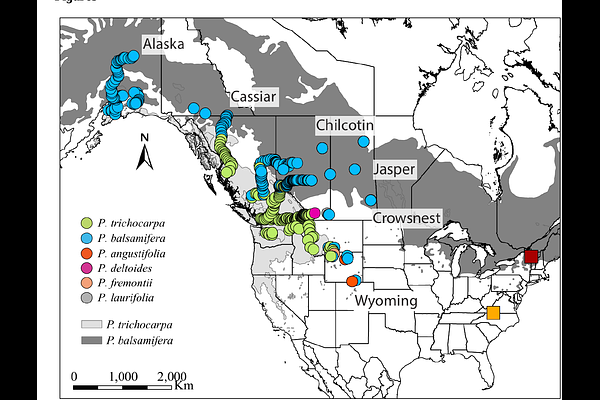The role of cytonuclear interactions to plant adaptation across a Populus hybrid zone

The role of cytonuclear interactions to plant adaptation across a Populus hybrid zone
Zavala-Paez, M.; Sutara, B.; Keller, S.; Holliday, J.; Fitzpatrick, M.; Hamilton, J.
AbstractCo-adaptation of cytoplasmic and nuclear genomes are critical to physiological function for many species. Despite this understanding, hybridization can disrupt co-adaptation leading to a mismatch between maternally-inherited cytoplasmic genomes and biparentally inherited nuclear genomes. Few studies have examined the consequences of cytonuclear interactions to physiological function across environments. Here, we quantify the degree of co-introgression between chloroplast and nuclear-chloroplast (N-cp) genes across repeated hybrid zones and its consequences to physiological function across environments. We use whole-genome resequencing and common garden experiments with clonally replicated genotypes sampled across the natural hybrid zone between Populus trichocarpa and P. balsamifera. We use geographic clines to test for co-introgression of the chloroplast genome with N-cp and non-interacting nuclear genes. Co-introgression of chloroplast and N-cp genes was limited although contact zone-specific patterns suggest that local environments may influence co-introgression. Combining ancestry estimates with phenotypic data across common gardens revealed that mismatches between chloroplast and nuclear ancestry can influence physiological performance, but the strength and direction of these effects vary depending on the environment. Overall, this study highlights the importance of cytonuclear interactions to adaptation, and the role of environment in modifying the effect of those interactions.